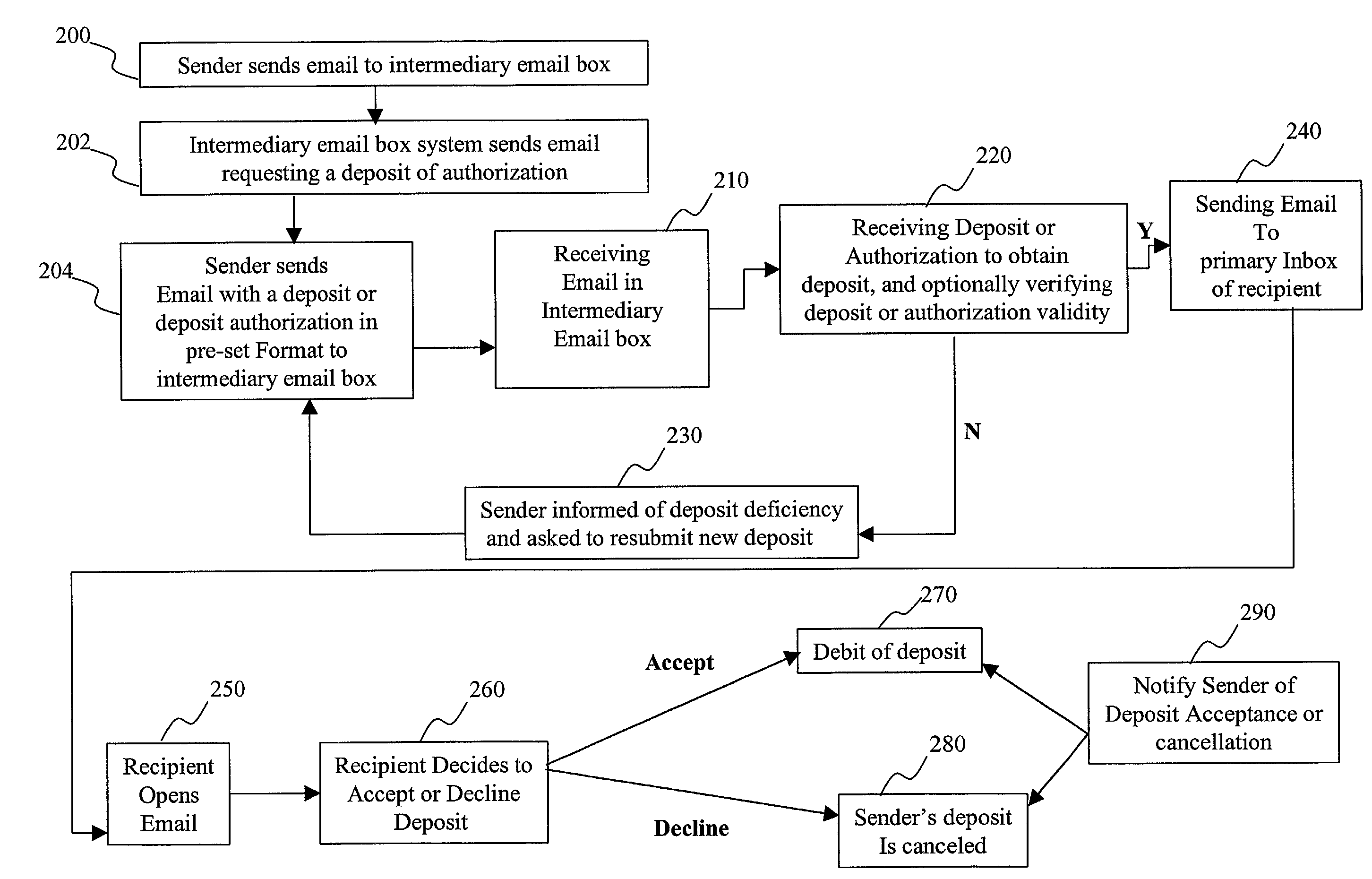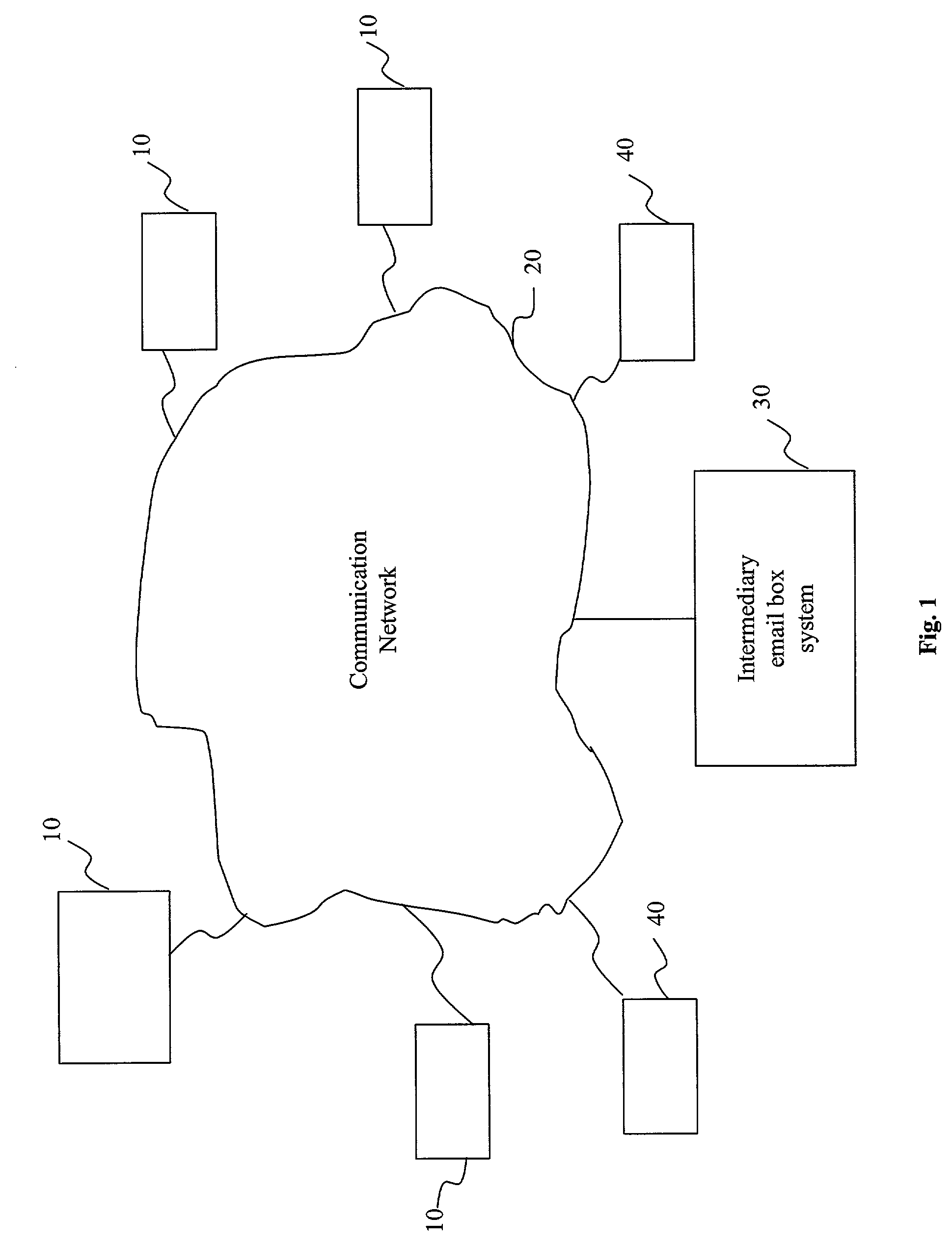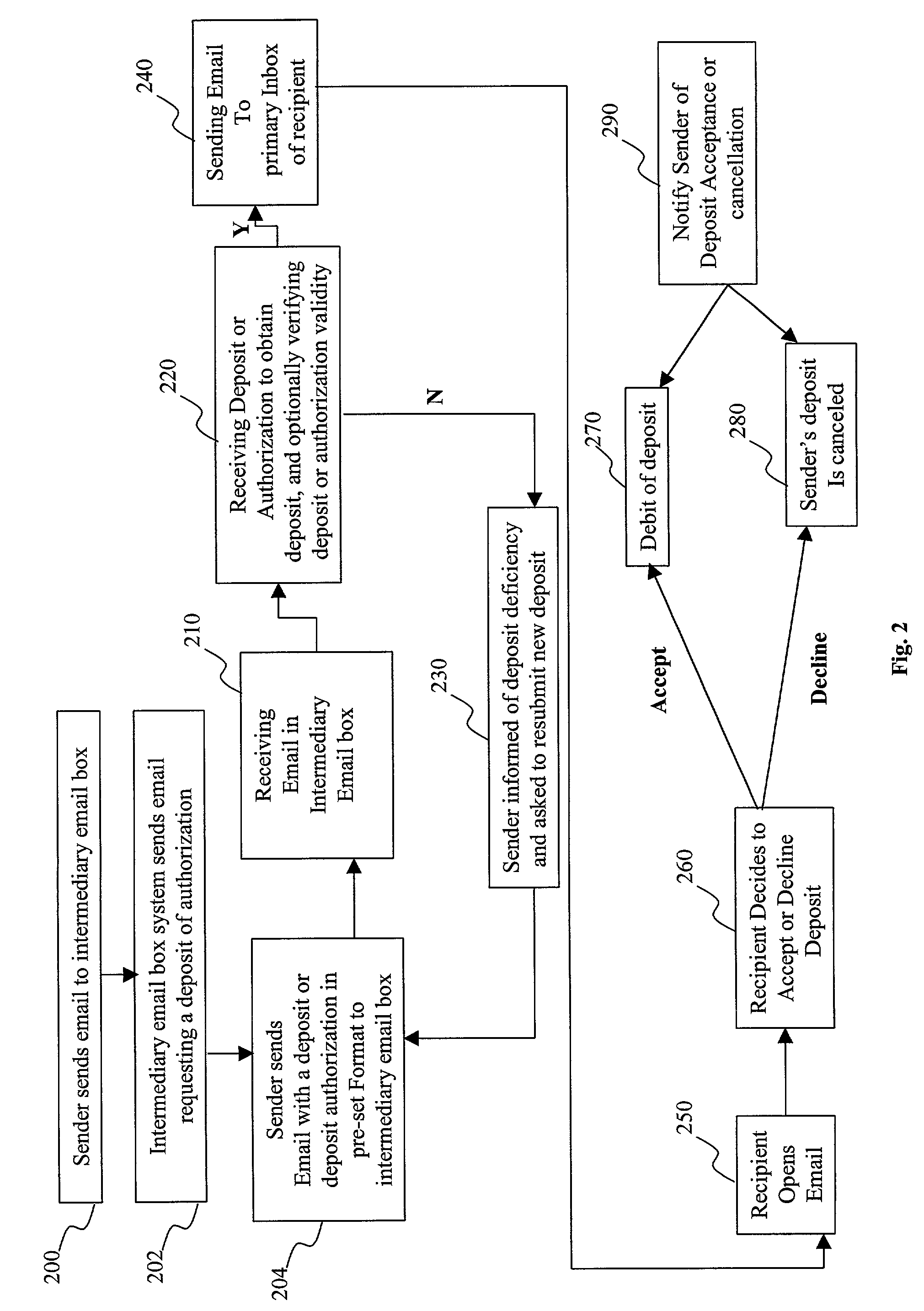System and method for granting deposit-contingent E-mailing rights
a technology of deposit-contingent e-mailing and system, applied in the field of network and internet communication, can solve the problems of long-term access to individual emails, time and effort for reviewing and discarding commercial emails, and many individuals resent their inability to shield themselves against unwanted intrusion, so as to facilitate the disposal of deposi
- Summary
- Abstract
- Description
- Claims
- Application Information
AI Technical Summary
Benefits of technology
Problems solved by technology
Method used
Image
Examples
Embodiment Construction
[0039]The present invention solves the foregoing problems, in one embodiment, by allowing users / potential recipients to grant others the right to send the users Emails on the condition that any sender of an Email pays a fee in the event that the user / recipient considers the Email to be an unwanted intrusion. This fee will deter most senders of unwanted commercial Emails (“spam”).
[0040]Users who wish to grant others access to their Email inbox, publish a permanent “intermediary” Email address which is different from their primary Email inbox. The term “intermediary Email box” is intended to be construed broadly to include any kind of conceivable device or receiving area, with or without storage, that processes an incoming message and rejects the message or rejects a request for additional mailing rights if the message does not come with a requisite deposit.
[0041]Alternatively, instead of publishing an intermediary address, users could simply publish a link at a website through which ...
PUM
 Login to View More
Login to View More Abstract
Description
Claims
Application Information
 Login to View More
Login to View More - R&D
- Intellectual Property
- Life Sciences
- Materials
- Tech Scout
- Unparalleled Data Quality
- Higher Quality Content
- 60% Fewer Hallucinations
Browse by: Latest US Patents, China's latest patents, Technical Efficacy Thesaurus, Application Domain, Technology Topic, Popular Technical Reports.
© 2025 PatSnap. All rights reserved.Legal|Privacy policy|Modern Slavery Act Transparency Statement|Sitemap|About US| Contact US: help@patsnap.com



